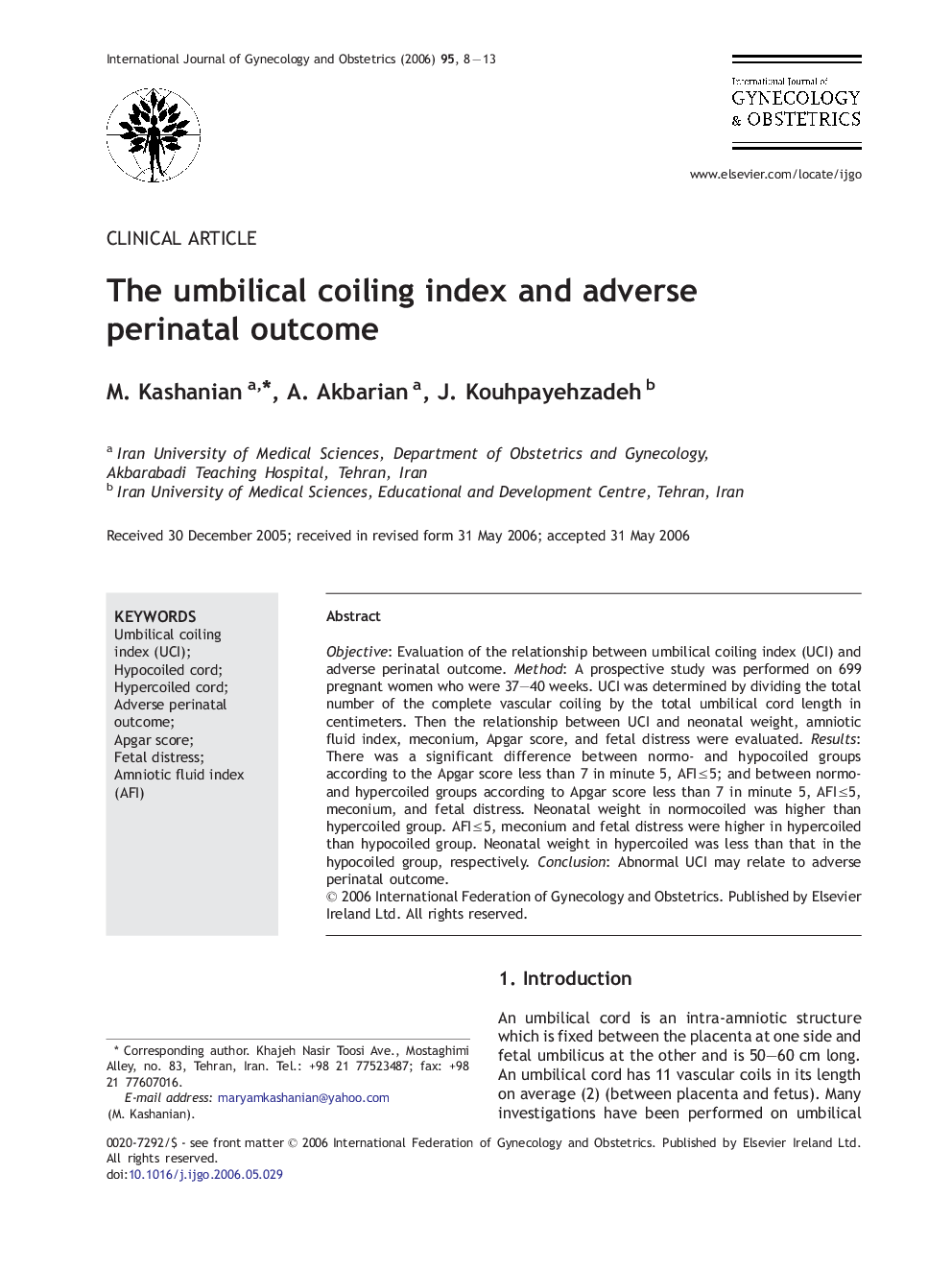| Article ID | Journal | Published Year | Pages | File Type |
|---|---|---|---|---|
| 3954055 | International Journal of Gynecology & Obstetrics | 2006 | 6 Pages |
ObjectiveEvaluation of the relationship between umbilical coiling index (UCI) and adverse perinatal outcome.MethodA prospective study was performed on 699 pregnant women who were 37–40 weeks. UCI was determined by dividing the total number of the complete vascular coiling by the total umbilical cord length in centimeters. Then the relationship between UCI and neonatal weight, amniotic fluid index, meconium, Apgar score, and fetal distress were evaluated.ResultsThere was a significant difference between normo- and hypocoiled groups according to the Apgar score less than 7 in minute 5, AFI ≤ 5; and between normo- and hypercoiled groups according to Apgar score less than 7 in minute 5, AFI ≤ 5, meconium, and fetal distress. Neonatal weight in normocoiled was higher than hypercoiled group. AFI ≤ 5, meconium and fetal distress were higher in hypercoiled than hypocoiled group. Neonatal weight in hypercoiled was less than that in the hypocoiled group, respectively.ConclusionAbnormal UCI may relate to adverse perinatal outcome.
